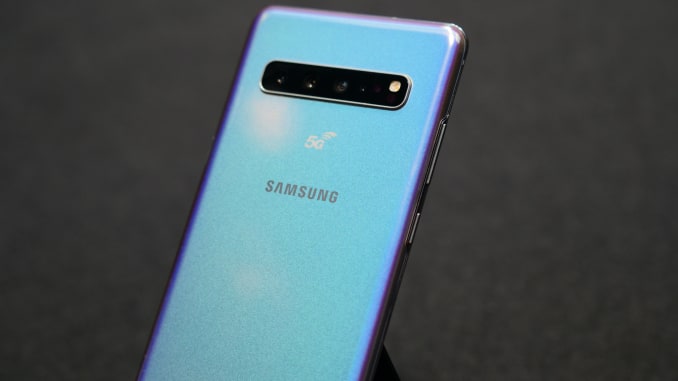That’s four times the number of 5G devices released in 2019.
Verizon plans to launch 20 5G devices in 2020, or four times the number that came out last year. More importantly, the devices won’t all command a hefty premium. Verizon plans to release phones that initially fall under the $800 price tag in the first half, and will get to a phone that’s priced under $600 in the second half, Verizon Wireless CEO Ronan Dunne said in an interview on Tuesday in a meeting room held in the bowels of the Sands Convention Center at CES 2020.
The number marks is a huge jump from 2019, when most of the 5G networks around the world made their initial release. The next-generation wireless technology promises to vastly enhance the speed and responsiveness of your mobile connection and drive new fields like self-driving cars and telemedicine, but has so far experienced growing pains with limited range and inconsistent coverage and speeds.
Dunne, who declined to name any specific devices, expressed confidence that the price of the devices would go down, and said that he had to turn down vendor partners wanting to build 5G phones.
His claim is significant because there are a lot of questions about the breadth of support that Verizon’s flavor of 5G, which is powered by a high-frequency spectrum called millimeter wave, will get from the industry. Millimeter-wave allows for radically improved speeds over 1Gbps, but it has strict limitations on coverage, currently only covering select parts of cities and NFL stadiums and not being able to penetrate into buildings.
Most of the world uses lower-band spectrum, which doesn’t match the raw speed but provides significantly better coverage including indoors. T-Mobile and AT&T have been deploying 5G on both millimeter-wave and low-band spectrum in the US, but both carriers have recently focused their 5G offerings around low-band.
Verizon is among the few carriers championing just the millimeter-wave flavor for now. Dunne, however, isn’t concerned.
“People who want to be taken seriously in the 5G world will have millimeter wave,” Dunne said.
In 2019, Verizon launched the Samsung Galaxy S10 5G, the Galaxy Note 10 5G, the LG V50 ThinQ 5G, the Moto Z4 with 5G Moto Mod and a 5G wireless hotspot. Dunne said that he expects most of the devices this year to be phones, with a handful of hotspots.
As for laptops with 5G connections, which made an appearance at CES 2020, Dunne said he expects more of those devices to come at the end of the year or in 2021.
One of the knocks of Verizon’s 5G millimeter-wave network has been its limited range.
Verizon is still on track to launch 5G on other bands beyond millimeter-wave throughout 2020, Dunne said. Utilizing what is known as Dynamic Spectrum Sharing (or DSS), the new technology will enable Verizon to take its existing 4G spectrum and deploy 5G alongside it, optimizing the service based on the amount of 5G and 4G users in the area.
Dunne said the company is already in the process of readying the upgrade, which will largely be a software update given the improvements Verizon has been putting into its network in recent years.
“What that allows us is to take the entire portfolio of spectrum that’s available” to the company, he said. “All of it can be deployed in a 5G world, but also what it can be deployed in is a 5G/4G world so that you don’t actually fixed allocate some of your bandwidth to one particular technology.”
He says that the commercial deployment of DSS will likely take place in the second half of the year. He wouldn’t go so far as to specify what kind of speed boosts low-band or midband 5G on Verizon will offer, but he did say the company’s offering will be an “enhancement” of the existing 4G service offered by the carrier today.
With DSS the spectrum is more efficient, Dunne adds, allowing for a “service that is at least as good as the 4G LTE and a bit better based on some of the capabilities of the handset.”
A real speed boost will come with more bandwidth being made available. Dunne says that Verizon has deployed between “55% and 60%” of its existing spectrum for 4G LTE, with the company planning to put more spectrum into use on LTE and 5G as it slowly turns off its 3G network and that spectrum becomes available.
Earlier this year the company started this multi-year process, announcing that it no longer will be activating 3G-only devices. “That spectrum is then available to be redeployed in 4G LTE and/or in 5G.”
“And obviously with DSS is and/or,” notes Dunne. “Because that’s the beauty of it.”













![Hotstar Premium Cookies 2019 [*100% Working & Daily Updated*] Hotstar Premium Cookies 2019 [*100% Working & Daily Updated*]](https://tahav.com/wp-content/uploads/2019/11/Hotstar-Premium-Cookies-Free-100x70.jpg)



